Disorderly conduct in the Bay Area covers behaviors that disturb public peace, from public intoxication to loud arguments and physical fights. First-time offenders typically receive citations with potential fines up to $1,000 and jail time up to 6 months. Police have flexibility in handling violations, often considering factors like criminal history and immediate safety threats. Treatment programs and legal defense options exist for those facing charges. Understanding the full scope of consequences and rights can make a significant difference in case outcomes.
Key Takeaways
- Disorderly conduct in the Bay Area includes public intoxication, lewd behavior, and illegal lodging, punishable by up to 6 months jail time.
- First-time offenders typically receive citations instead of arrests and may qualify for treatment programs leading to possible record expungement.
- Police have discretion in handling violations, considering factors like criminal history and cooperation when deciding between citations or arrests.
- Employment prospects can be significantly impacted, with Bay Area employers screening records and showing reduced callback rates for candidates with violations.
- Legal defenses include challenging witness credibility, disputing evidence, and pursuing charge reductions through court diversion programs or plea agreements.
Legal Definition of Disorderly Conduct in California
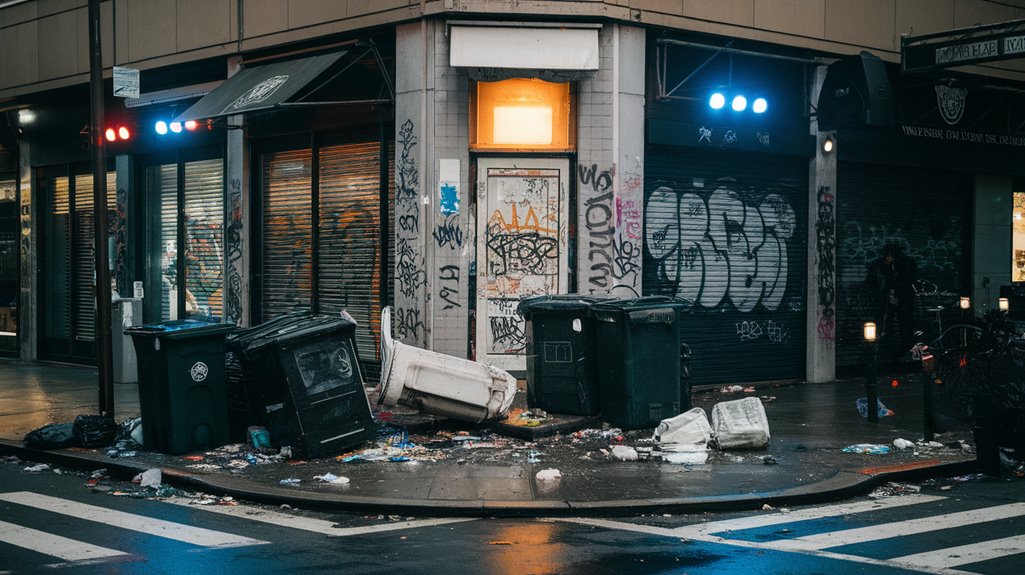
California law defines disorderly conduct through Penal Code 647, which covers various public behaviors that disturb the peace or threaten public safety. This statute outlines specific offenses including lewd conduct, prostitution, public intoxication, and illegal lodging.
The legal definitions within Penal Code 647 focus on actions that endanger public safety rather than just causing offense. To secure a conviction, prosecutors must prove beyond reasonable doubt that the accused intended to disturb the peace. The law breaks down into subdivisions (a) through (j), each addressing different types of disruptive behavior. Common violations include loitering in public restrooms, engaging in prostitution-related activities, and recording others without consent in private spaces. These offenses typically result in misdemeanor charges.
Common Types of Public Disturbance Offenses
Disorderly conduct cases in the Bay Area frequently involve public intoxication, where individuals display impaired behavior like stumbling or causing disturbances while under the influence. Local law enforcement regularly responds to peace disturbance violations stemming from loud arguments, physical altercations, and unreasonable noise that disrupts neighborhoods. These incidents often combine multiple offenses, such as when intoxicated individuals engage in fights or aggressive behavior that disturbs the peace.
Public Intoxication Cases
Public intoxication represents one of the most common disorderly conduct violations in the Bay Area, occurring when someone under the influence of alcohol or drugs creates safety risks or blocks public access. Recent public intoxication trends show Bay Area jails processing approximately 238 bookings monthly, though diversion program effectiveness remains high with 85% of cases avoiding jail time through PC 849(b)(2). These trends not only highlight the persistent issue of public intoxication but also emphasize the need for comprehensive intervention strategies. While diversion programs demonstrate significant success in reducing jail time, it is crucial to address the underlying factors that lead to such behavior. Furthermore, with the implementation of zero tolerance DUI laws overview, law enforcement has a clearer directive to minimize risky behaviors in public spaces, creating a safer environment for all residents and visitors alike.
| Requirement | Penalty | Evidence Needed |
|---|---|---|
| Public Place | 6 months jail max | Observable signs |
| Safety Risk | $1,000 fine max | Officer testimony |
| Voluntary Use | 90 days (3rd offense) | Public location |
| Blocked Access | Treatment options | Conduct proof |
The offense requires documented evidence of dangerous behavior or obstruction in public spaces, with officers noting visible signs like slurred speech or unstable walking.
Disturbing Peace Violations
Among the most frequent criminal complaints in the Bay Area, disturbing the peace violations encompass a range of disruptive behaviors that interfere with community tranquility. Common noise complaints include late-night parties with loud music, excessive shouting, and domestic disputes that spill into public spaces.
Public disturbances often involve physical confrontations, such as fights in parking lots or on streets. Other violations include using provocative language to incite violence and holding unauthorized gatherings that disrupt public areas. Law enforcement regularly responds to disturbances near venues, libraries, hospitals, and schools where quiet conduct is expected.
These offenses can escalate from minor noise issues to serious altercations, particularly when involving intoxicated individuals or gang-related activity. Many cases stem from gatherings that lack proper permits or exceed local noise ordinances.
San Francisco Municipal Code vs. State Law
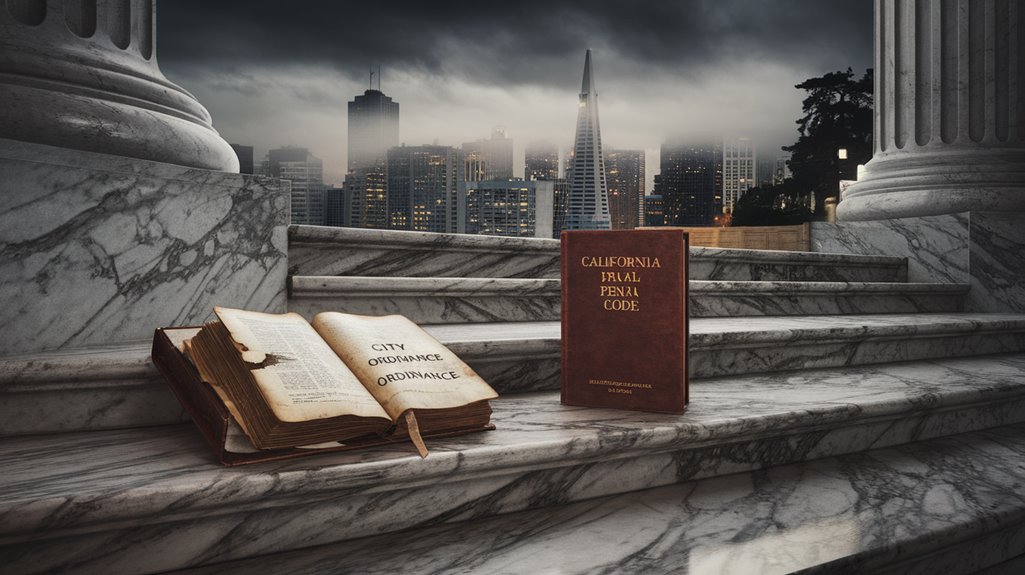
Legal restrictions on disruptive behavior differ markedly between San Francisco’s city code and California state law. While SFMC §22 narrowly addresses pedestrian obstruction, state laws cover a broader range of disruptive conduct. These SFMC implications focus mainly on keeping walkways clear, whereas state law distinctions encompass multiple offense types. Moreover, the city code places a higher emphasis on local concerns, such as defending against unauthorized vehicle use in public spaces, which is not always explicitly addressed at the state level. This localized approach allows San Francisco to tailor its regulations to the unique challenges it faces, ensuring that public areas remain accessible and safe for residents and visitors alike. In contrast, California state law provides a more comprehensive framework for handling disruptive behavior, reflecting the diverse needs of various communities across the state.
| Comparison | SFMC §22 | State Law (PC §647, §415) |
|---|---|---|
| Scope | Pedestrian obstruction only | Multiple offense types |
| Focus | Public walkway access | General public order |
| Penalties | Local ordinance violations | Criminal misdemeanors |
Understanding these differences is essential for Bay Area residents, as behavior that might only violate city code in San Francisco could result in more serious state-level charges elsewhere in California. State laws provide more extensive coverage of disorderly conduct, including intoxication, fighting, and noise disturbances.
Penalties and Consequences for First-Time Offenders
First-time disorderly conduct offenders in the Bay Area typically receive citations rather than immediate arrests, with penalties of up to 6 months in jail and $1,000 in fines. The courts often allow participation in treatment or counseling programs as an alternative to standard penalties, particularly for cases involving public intoxication or minor disturbances. While a disorderly conduct charge can remain on someone's record, successful completion of court-mandated programs may lead to eventual expungement for first-time offenders.
Citation vs. Arrest Process
When facing disorderly conduct charges in the Bay Area, offenders typically encounter one of two paths: citation or arrest. Police officers have flexibility in their enforcement choices, often opting for cite and release in cases of minor, non-violent incidents. In instances where the situation escalates or involves more serious infractions, individuals may find themselves facing formal arrest and potential court appearances. Depending on the nature of the charges, offenders could also explore options such as house arrest and DUI alternatives, which provide a means to serve their time outside of traditional incarceration. These alternatives not only allow for rehabilitative opportunities but also help alleviate overcrowding in local jails.
Citation options allow officers to issue a ticket requiring the offender's signature and court date acknowledgment, rather than making an arrest. However, certain factors may lead to arrest instead, such as lack of identification, refusal to sign, or public safety concerns. After arrest, individuals undergo booking procedures including fingerprinting and photographs.
The choice between citation and arrest often depends on the specific circumstances, including the severity of conduct, the offender's cooperation, and whether they pose any immediate risks to public safety.
Treatment Program Options Available
The Bay Area offers various treatment programs for individuals charged with disorderly conduct, especially benefiting first-time offenders. Treatment accessibility includes Drug Court programs providing intensive outpatient care as an alternative to jail time. Residential centers like Muir Wood and Evolve Teen accept adolescents struggling with substance use and mental health issues.
Program effectiveness is enhanced through multiple options. Qualifying individuals can access medication-assisted treatment and counseling services through probation referrals. Family-focused care is available through California's Dependency Drug Court, offering both residential and outpatient treatment. These programs often combine therapy, supervision, and support services over several months. Successful completion may reduce penalties, particularly for non-violent offenses, while addressing underlying behavioral issues to prevent future incidents.
Potential Long-Term Record Impact
Disorderly conduct violations carry significant long-term consequences for offenders in the Bay Area, even for first-time cases. A criminal record can create lasting barriers in multiple areas of life, particularly when seeking employment. Many employers conduct background checks, and a disorderly conduct conviction may limit job opportunities. Moreover, individuals with such convictions may also face challenges in securing housing, as landlords often review applicants’ criminal histories. To navigate these obstacles, it is crucial for offenders to seek legal counsel and understand their rights. Understanding federal convictions can further illuminate the repercussions of their actions and help them make informed decisions moving forward.
The impact extends beyond employment. Housing applications may be rejected by landlords who screen for criminal records. Educational institutions often ask about criminal history during the admission process. Professionals in fields like teaching and healthcare may face licensing difficulties. While record expungement might be possible for some first-time offenders, the process takes time and resources. Until then, individuals must navigate these challenges while dealing with potential fines, court costs, and probation requirements.
Repeat Offender Implications and Enhanced Penalties
Repeat offenders of disorderly conduct face increasingly severe consequences in the Bay Area's legal system. While first-time violations typically result in up to six months in jail and $1,000 fines, recidivism consequences become much harsher. Multiple offenses within a 24-month period trigger enhanced penalties and stricter probation terms.
Penalty escalation is particularly severe when minors are involved. Second-time violations under PC 647(j)(3) involving minors can result in $2,000 fines or one year in jail. Cases involving alcohol or drug use may face additional penalties if the court determines intoxication made the offense more serious. Violations occurring near schools, parks, or youth centers automatically receive intensified sentences, and offenders may also face mandatory restitution payments to victims beyond standard penalties.
Treatment Programs and Diversion Options
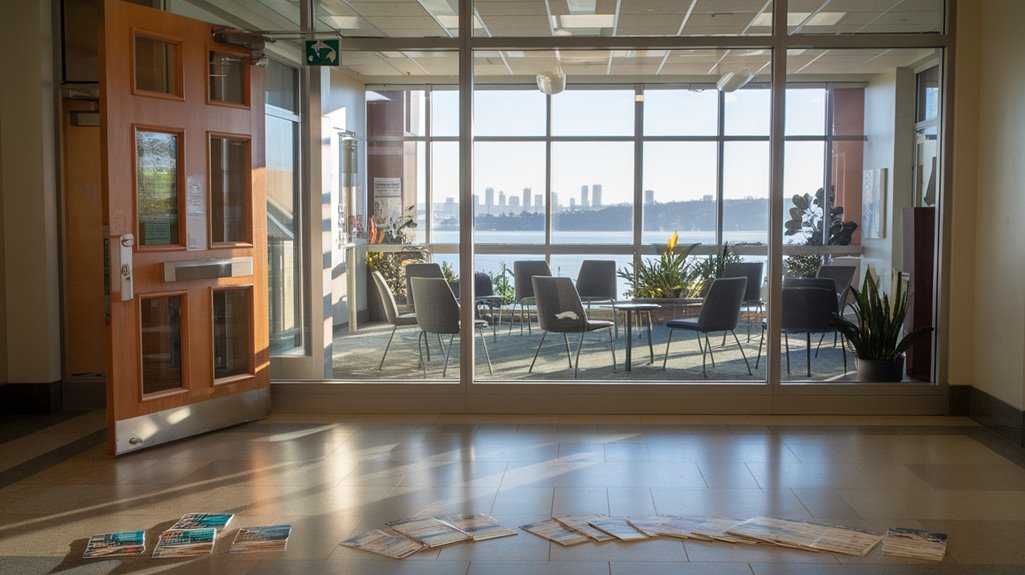
Bay Area offenders facing disorderly conduct charges have multiple treatment and diversion options available through the court system. Treatment accessibility is enhanced through programs like Drug Court, which provides at least 9 months of supervised care and mandatory support groups. Offenders can access residential facilities such as The Camp Recovery Center, offering substance abuse treatment alongside therapy and experiential activities.
Diversion effectiveness is demonstrated through programs that allow participants to avoid jail time by completing therapy and education requirements. Centers like Muir Wood partner with major insurance providers to reduce financial barriers. Many programs emphasize evidence-based outcomes and family healing. Successfully completing court-mandated programs often leads to case dismissal and record sealing, helping offenders maintain future employment and housing opportunities.
The Role of Law Enforcement Discretion
Police officers in the Bay Area have significant flexibility in how they handle disorderly conduct violations, choosing between issuing citations, making arrests, or referring individuals to treatment programs. Their decisions often depend on factors like department policies, available resources, and the specific circumstances of each incident. Beat officers must regularly weigh the immediate need to maintain public order against longer-term community goals when deciding how to address disruptive behavior.
Officer Citation Options
When issuing citations for disorderly conduct, law enforcement officers must navigate complex decisions that balance public safety with constitutional rights. Officer training varies across departments, with some emphasizing de-escalation rather than immediate citation.
Officers must evaluate behavior within its context, considering factors like location and environmental circumstances. Before issuing citations, some jurisdictions require detailed documentation of probable cause through pre-charge memorandums. Citation procedures often depend on whether actions meet the "fighting words" threshold or pose genuine threats, rather than mere displays of disrespect.
Body camera footage plays an essential role in validating citation decisions, especially given that civilian recordings have exposed discretionary misuse. In the Bay Area, data shows concerning patterns of selective enforcement, particularly in cases involving public intoxication and protest-related incidents.
Treatment Vs Enforcement Choices
Law enforcement discretion shapes how disorderly conduct cases are handled in the Bay Area, with officers weighing treatment options against strict enforcement.
Officers consider several factors when deciding between treatment options and enforcement strategies. First-time offenders may receive probation with mandatory counseling or substance abuse treatment instead of jail time. Community service and restitution programs offer alternatives to incarceration, particularly for trespassing or public intoxication cases.
For more serious violations, like repeated prostitution solicitation or cases involving minors, stricter enforcement applies with doubled fines and extended jail terms. Police prioritize actions threatening public order over isolated incidents. When evaluating privacy invasion charges, officers assess victim consent and privacy expectations before determining appropriate charges. This balanced approach allows for rehabilitation while maintaining public safety.
Beat-Level Decision Making
Beat officers make essential decisions daily about how to handle disorderly conduct violations in Bay Area communities. Their beat-level strategies focus on using discretion to maintain order while building community engagement. Officers must balance enforcement with community needs, often choosing between warnings and arrests based on situation severity.
- Officers monitor areas for signs of escalating behavior like public intoxication or loud disputes
- Police use visible presence and proactive ticketing to deter future violations
- Training emphasizes de-escalation techniques before resorting to arrests
Local law enforcement can issue warnings for minor infractions when appropriate, while still documenting incidents. This flexibility allows officers to address public disturbances effectively while maintaining positive relationships with residents. Their decisions aim to prevent larger crimes through early intervention while respecting individual rights and community standards.
Court Processing and Case Resolution Timelines
After an arrest for disorderly conduct in the Bay Area, cases move through several key processing stages with specific timelines. Initial court appearances typically happen within 48 hours, followed by attorney assignments within two weeks. Plea negotiations usually begin within 30 days of arraignment, with first-time offenders often receiving dismissal offers.
Court delays can occur due to various factors, including probation assessments that may take 2-4 weeks, discovery requests lasting up to 30 days, and scheduling of motion hearings 60-90 days after filing. Most misdemeanor cases resolve within 2-6 months from arrest to sentencing. Those choosing informal diversion programs can expect an additional 90-120 day timeline but may avoid a criminal record. Expungement options become available 60 days after completing probation.
Citation vs. Arrest: Understanding the Difference
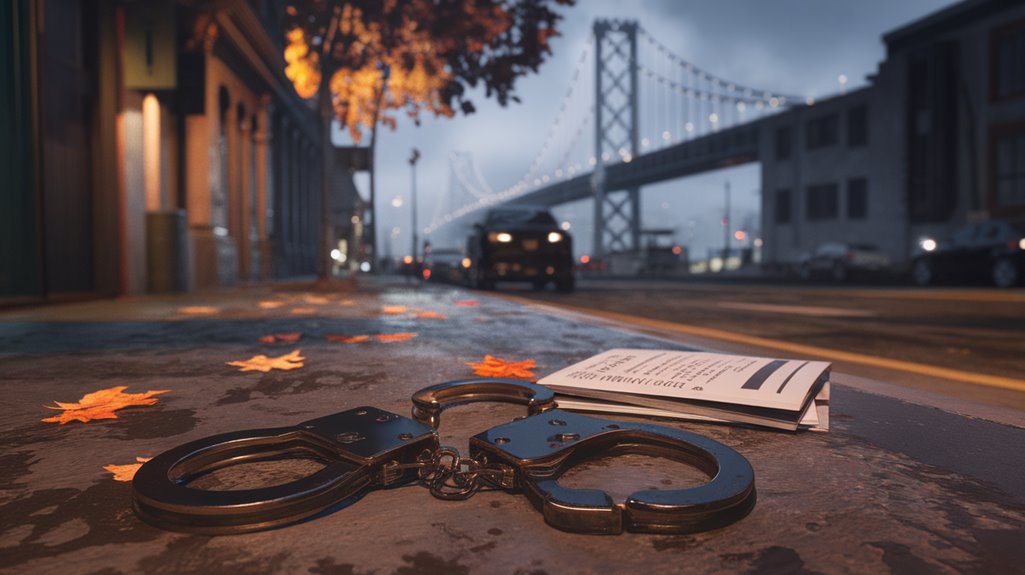
Police officers in the Bay Area follow specific guidelines when deciding between issuing a citation or making an arrest for disorderly conduct. Citations generally apply to minor infractions like noise violations or public intoxication, carrying fines between $1,000-$5,000 without jail time for first offenses. The decision to arrest typically occurs with more serious circumstances, such as repeat offenses, involvement of minors, or when the suspect poses an ongoing threat to public safety.
Citation Severity Levels
Local jurisdictions in the Bay Area handle disorderly conduct violations differently, leading to varied levels of severity in citations. The citation nuances depend largely on whether the incident falls under municipal ordinances or state statutes. Municipal distinctions play a key role, as some cities may treat certain behaviors as simple infractions while others process them as misdemeanors.
- Public spaces like parks and parking lots typically result in stricter enforcement
- First-time offenders often receive citations instead of arrests
- Location near schools or government buildings can increase citation severity
The way citations are handled varies considerably by jurisdiction. While some areas allow payment of fines to resolve infractions, others require court appearances. This difference affects whether the violation becomes part of a permanent criminal record.
Officer Discretion Guidelines
Bay Area law enforcement officers follow specific guidelines when deciding between issuing citations or making arrests for disorderly conduct. Officer accountability requires documenting clear justification for each decision, while maintaining public safety remains the top priority.
| Factors Favoring Citation | Factors Favoring Arrest |
|---|---|
| First-time offense | Criminal history |
| Cooperative behavior | Resistance to officers |
| Minor disturbance | Immediate safety threat |
| Valid identification | Refusal to identify |
| No intent to harm | Clear intent to harm |
Officers must act when behavior disturbs others or poses safety risks. While citations are typical for public intoxication or noise violations, arrests become necessary when individuals refuse to comply or show intent to harm. State laws mandate arrests in specific scenarios like domestic violence, overriding officer discretion. For ambiguous cases, officers consult supervisors to ascertain fair enforcement.
Rights and Responsibilities When Cited
When individuals receive a disorderly conduct citation in the Bay Area, they have specific rights and responsibilities they need to understand. Rights awareness is essential, as cited individuals maintain their Miranda rights, including the right to remain silent and seek legal representation. This applies particularly during any police questioning that may follow the citation.
Key points to remember:
- You have the right to refuse answering questions without a lawyer present
- Any voluntary statements made without Miranda warnings may be inadmissible in court
- You can challenge the probable cause for the initial citation
If questioned while in police custody, individuals should clearly state their intention to remain silent until speaking with an attorney. This helps protect their legal interests and guarantees proper procedural rights are maintained throughout the citation process.
Statistical Trends in Bay Area Enforcement
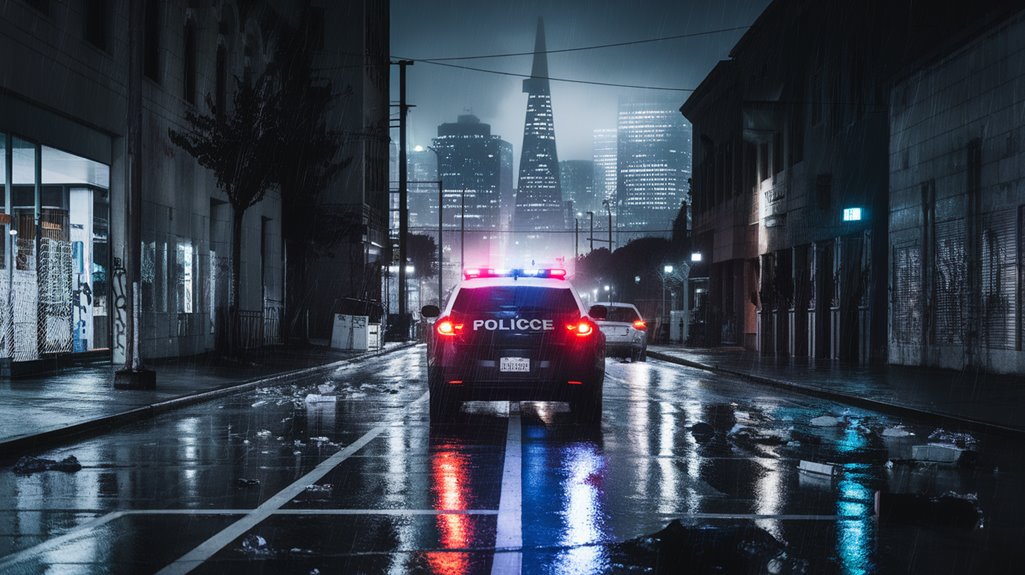
Statistical data from recent years reveals significant shifts in Bay Area enforcement patterns and crime rates. The region experienced notable decreases, with property crimes dropping 31% and violent crimes reaching a 20-year low in 2024. Within these trends, disorderly conduct statistics show inland counties having 3-4 times higher arrest rates than coastal areas after the pandemic.
Enforcement trends indicate a rise in misdemeanor arrests by 4.8% in 2023, including increased public intoxication citations. While the Bay Area previously held California's highest property crime rate in 2022, recent data shows improvement. Property-related crimes decreased from 79% to 74% of total Bay Area offenses between 2023 and 2024. However, Oakland and Contra Costa continue to experience violent crime rates double the regional average.
Impact on Employment and Background Checks
Criminal background checks create significant hurdles for job seekers in the Bay Area, where over 70% of employers screen applicants' records. While disorderly conduct qualifies as a violation rather than a crime in California, employment discrimination and background check challenges can still impact applicants through broader screening practices.
- Job applicants with records receive 50% fewer callbacks from employers
- Black candidates face steeper barriers, with only 5% callback rates compared to 17% for white applicants with records
- Background check disputes can delay hiring processes and impact career advancement
Despite research showing comparable performance from employees with records, many employers maintain broad disqualification policies rather than job-specific risk assessments. This practice particularly affects positions requiring public trust or professional licenses, though some employers are shifting toward more targeted screening approaches.
Legal Defense Strategies and Options
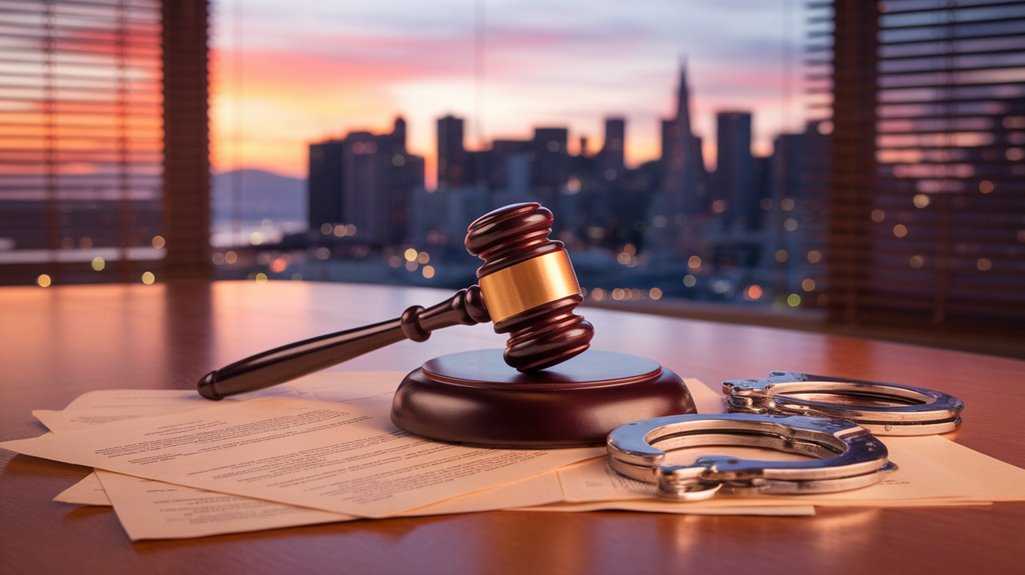
Defendants facing disorderly conduct charges in the Bay Area have multiple legal defense options available. Common defense approaches include challenging witness credibility, disputing evidence collection methods, and questioning the intent requirement of the charges. Attorneys can scrutinize police reports, video footage, and witness statements for inconsistencies or constitutional violations.
Several legal implications arise when building a defense strategy. These include arguing First Amendment protections, self-defense claims, or proving that actions were unintentional or caused by medical emergencies. Procedural defenses, such as challenging probable cause or Miranda rights violations, can also be effective. Additionally, defendants may pursue strategic negotiations for charge reduction, court diversion programs, or conditional dismissals through plea agreements, potentially minimizing the long-term impact of the charges.
Alternative Resolution Programs
Bay Area courts offer several alternative resolution programs for disorderly conduct cases. These alternative dispute resolution options help defendants avoid traditional court proceedings while addressing underlying issues. Programs are tailored to specific groups and circumstances.
- Mental health diversion assists those with diagnosed conditions like bipolar disorder or PTSD
- Military diversion supports service members dealing with trauma or substance use problems
- Primary caregiver programs help parents maintain family stability while resolving charges
Community service programs often form part of these resolutions. Eligibility varies based on the nature of the offense and individual circumstances. However, cases involving sex crimes, domestic violence, or child abandonment are typically excluded from pretrial diversion options. Each program aims to address root causes while providing accountability through structured support and supervision.
Recent Policy Changes and Enforcement Updates
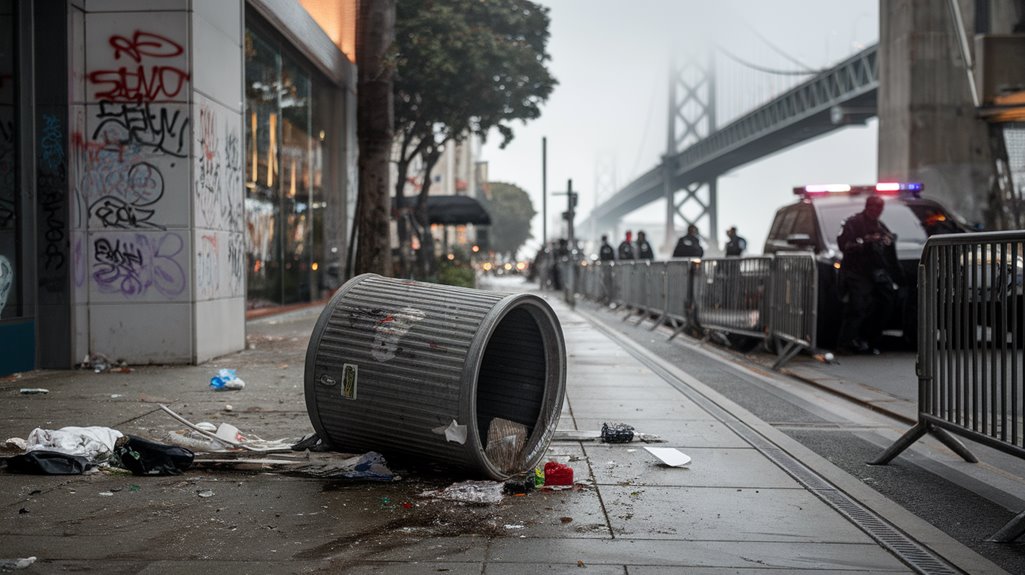
Recent shifts in how authorities handle disorderly conduct cases have reshaped enforcement across the Bay Area. Law enforcement now emphasizes community outreach and preventive measures in high-crime areas, moving away from purely reactive approaches.
Legal reforms have introduced several key changes. First-time offenders can now receive non-custodial releases, while penalties have doubled for disturbances on school grounds. The courts have expanded pre-conviction release options for non-violent offenses dating back to 2019. Additionally, social media evidence now plays a vital role, with half of recent cases stemming from civilian-recorded videos.
Mental health considerations have gained prominence, with 18% of cases now qualifying for treatment-based alternatives to jail under new legislation. Enhanced monitoring through ankle devices targets repeat offenders.
Frequently Asked Questions
Can Disorderly Conduct Charges Be Expunged From My Juvenile Record?
Yes, disorderly conduct charges can typically be expunged from juvenile records through the legal process of juvenile expungement. In most states, summary offenses like disorderly conduct qualify for expungement after waiting periods are met, usually 6 months after case completion. The person must have completed all court requirements and have no pending charges. Working with a lawyer or public defender can help navigate the expungement process successfully.
How Long Do Police Have to Respond to Disorderly Conduct Complaints?
Police response times for disorderly conduct vary based on priority levels. Coincidentally, just like emergency room triage, police protocols categorize calls by urgency. Violent situations typically get immediate response within minutes, while non-violent disturbances might take 30-60 minutes. Low-priority cases could see response times of several hours. Local staffing, current call volume, and location also affect how quickly officers arrive. There's no universal required response time for these calls.
Are There Different Rules for Disorderly Conduct on Public Transit?
Yes, public transit policies have specific rules for disruptive behavior that differ from general disorderly conduct laws. Transit systems enforce stricter regulations against actions like blocking pathways, making excessive noise, and spitting. California Penal Code specifically addresses transit-related misconduct, with fines ranging from $500-$2,000. Transit agencies also employ trained ambassadors and camera systems to monitor and respond to disruptive incidents, providing more immediate enforcement than regular street situations.
Do Private Security Guards Have Authority to Detain for Disorderly Conduct?
Private security guards have limited detention authority when they witness disorderly conduct on private property they are protecting. They must have probable cause, not just suspicion. Guards can temporarily detain individuals but must immediately notify police. They can use reasonable force if necessary, but cannot make arrests like law enforcement. The detention must end when police arrive or the situation is resolved.
Can Someone Be Charged With Disorderly Conduct for Actions Inside Their Home?
While home privacy is generally protected, actions inside a residence can lead to disorderly conduct charges if they noticeably impact public spaces or neighbors. Common examples include excessive noise that disturbs the neighborhood or disruptive behavior visible from public areas. Legal boundaries exist, but if private conduct creates a public disturbance, it may cross the line into criminal behavior, regardless of where it originates.
Conclusion
Like David versus Goliath, anyone facing disorderly conduct charges in the Bay Area can fight back with knowledge and proper legal help. The path forward involves understanding local laws, exploring defense options, and taking advantage of alternative programs. While these charges may feel overwhelming at first, many have successfully navigated similar situations and moved on to brighter futures with clean records intact.
